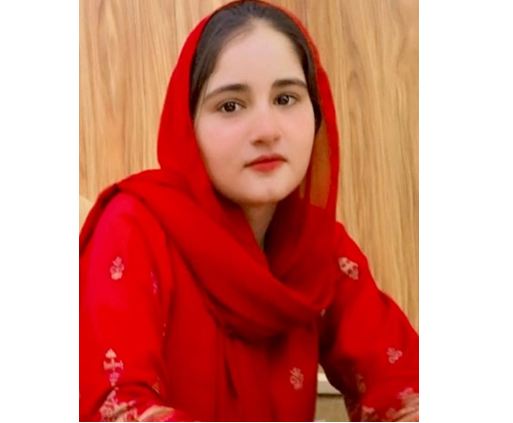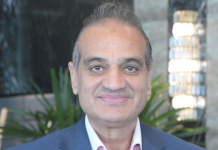Laiba Bashir
BS International Relations
The protests in Nepal began shortly after the government banned 26 popular social media platforms on September 4, 2025. These included Facebook, Instagram, YouTube, WhatsApp, X (formerly Twitter), and LinkedIn. The government argued that the ban was necessary because these companies failed to comply with new regulations requiring them to register with Nepal’s Ministry of Communication and Information Technology. The rules were introduced to help authorities curb harmful content such as misinformation, hate speech, and online fraud. Despite repeated warnings and opportunities to register, the companies did not comply, leading the government to block their services nationwide.
For Generation Z—who rely heavily on social media for communication, news, entertainment, and even employment opportunities—the ban felt like a direct attack on their freedom of expression and connectivity. Many young Nepalis also used these platforms to expose corruption and highlight the privileges enjoyed by powerful political families. The hashtag #Nepokids (short for “nepotism babies”) gained traction, criticizing how the children of elites lived in luxury while ordinary citizens struggled with unemployment and limited access to basic services.The ban was therefore seen not just as a regulatory decision but as a political move to silence dissent and weaken youth-led anti-corruption activism. Social media had become a crucial organizing tool for young people to spread their message quickly and mobilize protests. Overnight, millions of Nepalis—nearly half the population—lost access to these platforms, sparking widespread anger and confusion. Many turned to VPNs to bypass the ban. This restriction became the spark that ignited larger demonstrations demanding honesty, accountability, and more opportunities for the country’s youth.
The median age in Nepal is 25, making young people a significant portion of the population. Unsurprisingly, it was this generation—Gen Z—that spearheaded the protests. What began as online resistance rapidly spilled into the streets, especially in Kathmandu and other major cities. The demonstrations were largely led by students and young workers who called for honesty, fairness, justice, and an end to the social media ban.Initially peaceful, the protests escalated after police attempts to disperse crowds. Security forces reportedly used water cannons, tear gas, rubber bullets, and even live ammunition. Human rights groups confirmed the deaths of at least 30 people, including three police officers, while hundreds were injured. Protesters retaliated by damaging government buildings, including the parliament and the Supreme Court, and setting fire to some politicians’ homes.The unrest forced Prime Minister K. P. Sharma Oli and several cabinet ministers, including the Home Minister, to resign. The Home Minister stepped down citing “moral responsibility” for the bloodshed. Authorities imposed curfews in Kathmandu and other urban centers in an attempt to restore order.
What made this protest movement unique was that it was largely independent of political parties. Most participants were motivated by frustration with corruption, nepotism, unemployment (over 20%), and poor economic conditions. Social media had previously been their most powerful tool for organizing, and the ban only deepened their determination. Despite the government crackdown, the protests demonstrated the ability of Nepal’s youth to mobilize effectively and demand change, marking a new chapter in the nation’s political history.
Although the social media ban was the immediate trigger, the protests were fueled by long-standing issues: widespread corruption, mismanagement, nepotism, and growing inequality. More than 20% of Nepali youth remain unemployed, and the economy depends heavily on remittances, which account for nearly one-third of national income. This reliance underscores the lack of domestic job opportunities.Such conditions created deep resentment among young people. The circulation of videos showing police violence, particularly the death of a young protester, further galvanized the movement. Reports that Prime Minister Oli’s wife had quietly left the country during the crisis added to perceptions of instability and elite detachment.Nepal’s youth movement mirrors similar protests across Asia, where digital-savvy young generations are challenging entrenched political systems and demanding jobs, fairness, and accountability.
The Gen Z protests in Nepal mark a turning point in the nation’s political trajectory. The government’s failure to address systemic issues—corruption, nepotism, and unemployment—has eroded trust in state institutions. When peaceful demonstrations turned violent, the army intervened to restore order and has since become a key player in negotiations over a transitional government that includes youth representation. This signals a potential new role for the military in Nepal’s governance.The events underscored the indispensable role of digital platforms in modern political life. Social media served not only as an organizational tool but also as a means of rapidly spreading information and uniting young Nepalis across the country’s challenging geography. Even after the government lifted the ban, the protests continued, proving that the movement’s demands went far beyond digital access. The youth called for transparency, job creation, accountability, and an end to entrenched corruption.Political leaders and the military now face mounting pressure to take Gen Z’s demands seriously. Experts argue that this could permanently reshape Nepal’s political landscape, embedding youth activism as a lasting force in policymaking and reform. While Prime Minister Oli and his ministers have resigned, the political situation remains fragile, with curfews and military patrols continuing in Kathmandu and other cities.
The youth-led movement is negotiating for a peaceful transition to a new, democratically elected government, emphasizing dialogue and reform.
Nepal’s Gen Z uprising represents a historic moment of political awakening. What began as a fight against a social media ban quickly evolved into a broader struggle against corruption, unemployment, and the outdated political order. Unlike earlier generations, this movement is fueled by digital connectivity, political awareness, and frustration with a system that has failed to deliver.The resignation of Prime Minister Oli is already a major achievement for the movement, but its true legacy lies in proving that young people can be a transformative force in politics. The future of Nepal will likely be shaped by this generation’s demands for transparency, inclusivity, and accountability.Yet challenges remain: ensuring peaceful reforms, bridging generational divides, and building public trust in new political institutions. Despite these hurdles, the protests have already altered Nepal’s political narrative. Gen Z has signaled that it is unwilling to accept the corruption and patronage of the past—and is prepared to fight for a more just and democratic future.

















